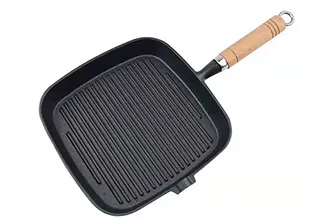
are cast iron skillets non stick
Are Cast Iron Skillets Non-Stick? A Deep Dive into Their Benefits
Cast iron skillets have been a kitchen staple for centuries, renowned for their durability and heat retention. Over time, they have earned a devoted following among chefs and home cooks alike. However, there is often debate surrounding their non-stick properties. Are cast iron skillets non-stick? The answer is both complex and straightforward, depending on how they are maintained and used.
At first glance, cast iron skillets may not appear to have a non-stick surface. Unlike modern non-stick pans that feature a synthetic coating, cast iron skillets rely on a seasoned surface to develop their non-stick capabilities. Seasoning involves applying a thin layer of oil and heating the skillet, which creates a protective, non-stick layer through a process called polymerization. This layer not only helps prevent food from sticking but also contributes to the skillet's overall flavor as it cooks.
The non-stick nature of a cast iron skillet can greatly improve with use. When properly seasoned and maintained, a cast iron skillet can provide a surprisingly effective non-stick cooking surface. Many cooks report that eggs, pancakes, and even delicate fish slide right off their well-seasoned skillets. However, achieving this level of non-stick efficiency takes time and consistent care.
To ensure your cast iron skillet becomes and remains non-stick, it's essential to follow some basic maintenance guidelines. After each use, clean the skillet with hot water and a stiff brush, avoiding soap if possible, as it can strip away the seasoning. If food is particularly stubborn, a bit of coarse salt can help scrub away residue. After cleaning, dry the skillet thoroughly to prevent rust, as cast iron is prone to corrosion.
are cast iron skillets non stick

Once the skillet is dry, apply a thin layer of oil to help maintain the seasoning. This step is crucial because it reinforces the non-stick surface and protects the pan from moisture. Regularly cooking with oil or fat will also enhance the seasoning, making it even more effective over time.
It's important to note that while cast iron skillets can become non-stick, certain cooking practices may hinder this property. High-acid foods like tomatoes and vinegar can break down the seasoning if cooked in a new or poorly seasoned skillet. It's often recommended to avoid these ingredients until your skillet has developed a robust seasoning layer.
In addition to their non-stick capabilities, cast iron skillets offer a variety of other benefits. They are incredibly versatile, suitable for use on the stovetop, in the oven, or even over an open fire. They retain heat exceptionally well, providing even cooking once they reach temperature. With proper care, cast iron skillets can last a lifetime—many even get passed down through generations.
Furthermore, cooking with cast iron can impart additional nutritional benefits. When using cast iron cookware, small amounts of iron can leach into foods, contributing to dietary iron intake, which is beneficial for many people.
In conclusion, while cast iron skillets may not be non-stick in the same way as traditional non-stick pans at first, with proper seasoning and care, they can develop excellent non-stick properties. Their versatility, durability, and the added nutritional benefits make cast iron skillets a fantastic addition to any kitchen. For those willing to invest the time to maintain them, cast iron skillets can be indispensable tools, capable of enhancing a wide range of culinary endeavors. So, if you're considering adding one to your collection, rest assured that with a little love, it can become one of the most trusted tools in your kitchen arsenal.
-
Season Cast Iron Perfectly with GPT-4 Turbo TipsNewsAug.01,2025
-
High Quality Cast Iron Cookware - Baixiang County Zhongda MachineryNewsAug.01,2025
-
Premium Cast Iron Pan: Durable & Perfect HeatNewsAug.01,2025
-
High Quality Kitchen Durable Black Round Cast Iron Cookware Pancake Crepe Pan-Baixiang County Zhongda Machinery Manufacturing Co., Ltd.NewsAug.01,2025
-
Cast Iron Cookware - Baixiang County Zhongda Machinery | Nonstick, Heat ResistanceNewsAug.01,2025
-
High Quality Kitchen Durable Black Round Cast Iron Cookware - Baixiang County Zhongda Machinery | Non-Stick, Heat Retention, DurableNewsJul.31,2025


